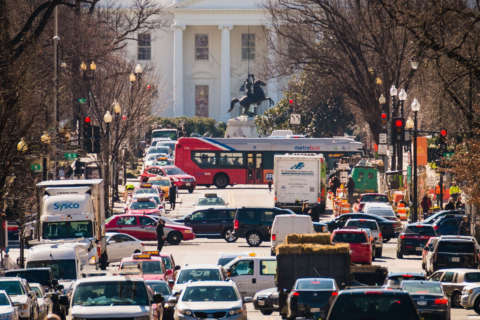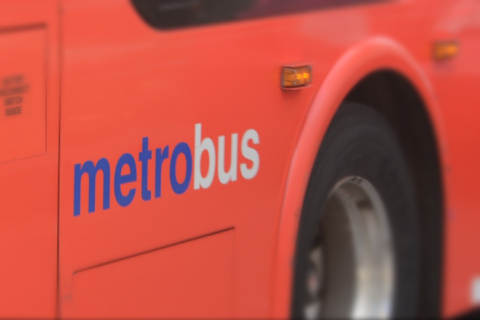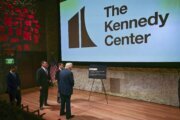Taking an Uber or Lyft in D.C. typically includes more than a five-minute wait, and that’s before you start dealing with traffic.
The first analysis of ride-hailing trip data by the Department of For-Hire Vehicles finds average wait times in June were more than 5.5 minutes every day of the week.
Far more people are taking Uber, Lyft, Via or similar services than are using cabs, according to the data. The change has helped drive down monthly cab fares by about $5 million over the last three to four years.
Ride-hailing vs. taxi
In June, the average number of taxi trips that started or ended in D.C each day ranged from 71,344 on Sundays to 137,532 on Thursdays.
Under the same parameters, ride-hailing services carried five to 10 times as many trips per day — ranging from a low of 587,640 on Mondays to a high of 989,804 on Saturdays over the course of the month.
On Saturday, June 1, there were 18,025 taxi trips, compared with 203,810 trips using the app-based services.
The app-based services carried more than 13,000 trips per hour between 6 p.m. and midnight and again 2 a.m. to 4 a.m. the following morning. Taxi trips were relatively consistent — around 1,000 trips per hour — from 5 p.m. to 3 a.m.
The busiest times for cabs are between 3 p.m. and 11 p.m., with the fewest taxi trips between 5 a.m. and 11 a.m.
For Uber, Lyft, Via and the like, the least common trip times are between 7 a.m. and 10 a.m., with the most common trip times falling between 9 p.m. and midnight. There is also consistent use between noon and 9 p.m. and between midnight and 3 a.m.
On Wednesday, June 12, to use another example, there were 34,551 taxi trips and 169,674 trips on the app-based services.
Taxis were busiest after noon, with a peak of 2,858 trips between 6 p.m. and 7 p.m.
Uber, Lyft and Via trips were busiest from noon to 2 p.m. and again from 9 p.m. to 11 p.m.
Both types of trips were least common in the morning rush hour in June. On June 12, there were only 80 taxi trips between 6 a.m. and 7 a.m. and 50 taxi trips between 7 a.m. and 8 a.m. There were 935 Uber, Lyft or Via trips between 6 a.m. and 7 a.m. and 592 trips between 7 a.m. and 8 a.m.
Longest/shortest times for ride-hailing
The longest wait times between requesting a ride and getting picked up using one of the apps tend to be in the mornings, with waits averaging more than 12 minutes between 8 a.m. and 9 a.m.
In addition to traffic, there are far fewer drivers available at those times. While the data counts twice for drivers who are logged in as available on more than one app at the same time (i.e. the common practice of having both Uber and Lyft apps up while waiting to accept a ride), the analysis counts the largest number of available drivers between 8 p.m. and midnight and the lowest number of available drivers between 6 a.m. and 10 a.m.
The number of active drivers increases as the week goes on from a low on Sunday of 46,780 to a high on Saturday of 55,183 on average.
On weekdays, the number of drivers picks up starting around noon, remaining consistent until another slight bump between 9 p.m. and 11 p.m.
After Friday and Saturday nights out, the number of drivers remains high until 4 a.m. or 5 a.m.
The shortest weekday wait times between requesting a ride and getting picked up using Uber, Lyft or Via are between midnight and 1 a.m.
On weekends, the longest waits are between 9 a.m. and 11 a.m.







